While I’ve been sticking close to home for the last year or so, I keep hearing that I’m pretty much the only one. Reports from rivers across the West, ranging from the Frying Pan in Colorado, to Idaho’s South Fork of the Snake, to the Madison right here in Montana, are all in agreement. There are more fly fishers on the water than ever before.
According to Angling Trade editor Kirk Deeter, writing in the pages of the fly fishing industry’s go-to publication, a lot of us “are absolutely mortified by the crowds, the pressure, and the overall degradation of the on-the-water experience we saw last season. Read the message boards. Look at the threads. We’re in a spot where some lovers of this sport are ready to throw their hands up and walk away, and the newbies are also having gag-reactions to their first impressions, because of the circus atmosphere.”
And Kirk is not the only one sounding the alarm. Pretty much every fly fisher I talk to these days has a tale (or eight) of showing up at their favorite stretch of water only to find a horde of other anglers looking to target the exact same spot. Even the NY Times took note with a story bearing the ominous title: “Pandemic Crowds Bring ‘Rivergeddon’ to Montana’s Rivers.”
The Times piece went on to note: “As urbanites flock to forests and rivers to escape coronavirus threats, trailheads are cramped with parked cars and fishing on the Madison River is like a Disneyland ride.”
If the reports are to be believed — and it doesn’t sound like we have much choice but to accept this new reality — then the recent influx of angling pressure has not only equaled, but surpassed, the huge bump that fly fishing experienced back in the early ‘90s after Robert Redford released his cinematic version of “A River Runs Through It.”
Which leaves us with a question with no easy or obvious answer. What are we supposed to do?
Well, first things first. We need to stop focusing on the positive. When someone new to fly fishing asks you what you love about our sport, do what comes naturally to every angler. Lie. Only instead of adding an inch to every brook trout you land, or a pound to your latest smallmouth bass, get a little more creative.
Tell new anglers that fly fishing is an irritating, impossible-to-master activity dominated far more by its major and long-lasting disappointments than by its minor and transitory triumphs.
Admit that you’ve grown to love the sound of mosquitoes buzzing in your ear.
Explain that you derive a certain visceral pleasure from traveling halfway across the country and not catching any fish.
Confess your preference for outdoor activities that mimic a Walmart parking lot on a hot summer afternoon.
Open up about your ongoing attraction to waterproof pants.
Wax poetic about the fact that fly fishing is more expensive than yachting, and harder to master than gymnastics, and more challenging than quantum physics.
Then share a quote or two from the experts. And no, I’m not talking about Arnold Gingrich opining that “a trout is a moment of beauty known only to those who seek it,” or Jim Harrison’s profound “I stare into the deepest pool of the river which holds the mystery of a cellar to a child, and think of those two track roads that dwindle into nothing in the forest. I have this feeling of walking around for days with the wind knocked out of me.”
Instead, offer up A.K. Best’s honest assessment that “the fishing was good; it was the catching that was bad.” Or John Gierach’s timeless observation that “creeps and idiots cannot conceal themselves for long on a fishing trip.” Or even Steven Wright’s classic “there's a fine line between fishing and just standing on the shore like an idiot.”
The goal here is simple. Throw cold water on the newcomers to our sport. Extinguish every tiny ember of angling passion that exists in the depths of their collective souls, and direct them to a more attractive and worthwhile pastime.
Checkers, maybe. Or perhaps crosswords puzzles.
Now if I had to make a bet, I’d wager that right now you’re asking yourself whether I’m serious about any of this. And the answer, of course, is that no, I’m not. In the grand scheme of things, more folks on the water is a positive development. Why? Well, mostly because we need the American public to steward and protect our rivers, lakes and streams, and it should be obvious that more anglers means more people joining conservation groups like Trout Unlimited and Fly Fishers International. In many, many cases, anglers are the last bastion between healthy rivers and degraded rivers, or between lakes with fish and lakes with none. Now more than ever, we need to swell the ranks of conservation advocates.
At the same time, though, we can not, and should not, ignore overcrowding. It’s a serious problem. None of us want to show up at the river first thing in the morning to find 43 boats in line ahead of us. Nor do we want to arrive at the trailhead to our favorite backcountry angling experience to learn that a dozen other folks are hiking into the exact same spot. So it’s incumbent upon each of us to come up with ways to make the current situation — this apparently inescapable swelling of our angling ranks — more tenable for everyone involved.
I’ve thought long and hard on this subject, and while there are any number of rules and regulations that, depending on location and circumstance, might prove helpful, there is also one overriding principle that I feel confident in recommending.
If you open up a King James Bible to Matthew 7:12, you’ll find the following words:
“Therefore all things whatsoever ye would that men should do to you: do ye even so to them: for this is the law and the prophets.”
Depending on your familiarity and comfort with the language, that particular verse may make a ton of sense, or it may sound dated, arcane or perhaps even unintelligible. And yet, in its more colloquial form, Matthew 7:12 is known the world-over. Even those of you who aren’t all that familiar with the Bible will have heard of “The Golden Rule.”
It’s really pretty simple. Do unto others as you would have them do unto you. Or, more plainly yet, treat people the way that you’d like to be treated.
When you’re out on the water and it’s a little crowded — or more than a little crowded — look around and put yourself in the other anglers’ shoes. How much space do they need? Which direction are they heading? What style are they employing? Ask those questions of yourself, along with any others that seem germane, and then react accordingly. If we all adhere to the Golden Rule and treat others like we hope to be treated, then we can minimize any shared inconvenience and maximize our collective enjoyment.
None of us know what the future is going to bring. We can’t say for certain whether recent crowding on the water will prove temporary, or whether we’ll need to adjust to a new normal as the siren call of the great outdoors continues to pull more and more people back to nature. But we can all commit to making the best of the current situation, and to cutting each other a little extra slack in these uncertain times. Let’s all act with as much mutual consideration, and as much grace, as we can individually and collectively muster.
Some years ago I came across a few words from Ralph Waldo Emerson that seem particularly apropos at times like this.
“To the dull mind nature is leaden. To the illuminated mind the whole world burns and sparkles with light.”
I like to think that if we roll out the welcome wagon for folks who are new to our sport, and if we treat everyone on the water the way we’d like to be treated, then perhaps we’ll all see the light.




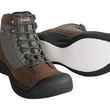
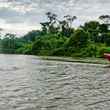





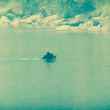


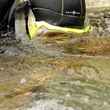





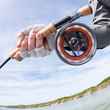



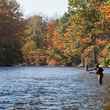
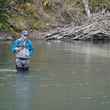




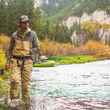
Comments
Dave Cannon replied on Permalink
I'll be the first to admit I'm selfish. Thirty-five years ago I got tired of seeing footprints ahead of me when I'd journey to my favorite "remote" fishing spot in Wyoming. I'd bitch about that, and came up with my theory that - give a nice place 20-years, and it'll be ruined. Eventually, I'd move to Alaska where I'd hoped that I could get away the crowds. The reality is, you can't. We, as a species, are loving too many things to death. The best we can hope to do is to minimize our impacts, unfortunately.
James replied on Permalink
Good points all. My suggestion is that for those who can fish mid-week, do. Also, trout are not the only fish that will take a fly. Pan fish are everywhere and can be a blast on light tackle. Bass are even more fun. The fly fishing options in the salt are almost limitless. Carp are spooky, grow huge and fight like hell. A second hand canoe or float tube can be had for short money, opening up all kinds of new waters.
My point is, there is more to fly fishing than just trout in big name western rivers. If we all mixed it up a bit, it might help the overcrowding problem.
GREG HERBRANSON replied on Permalink
You have accessed the answer to our presumed problem. In the 20+ years that I have fly fished, the media focus (magazines) was always on trout / salmon. They are glamorized and are the "cool " species to target, including a list of Top 10 Must Fish Rivers In The West. Why? Newcomers then naturally want to fish the glamorized locations bringing more people to the same big name rivers. You actually can't blame them since being new to the sport, how would they know otherwise? As media evolved, magazines shifted to more steelhead coverage, occasionally stripers, salt water species and even carp. All of this is good, too many people believe that trout are the only thing "cool" to fish for - I have been guilty of this myself. What I see now that is very discouraging is what social media has done to the outdoor experience, people of all ages want to post their great catch, brag a bit, tell the world where they did it. This only adds to more crowding. No place is sacred anymore, no matter how remote. To me, the answer lies in seeking out new ventures, like smallmouth bass on a river, norther pike, and yes, even carp. All of which are very worthy species without the crowds, and then let's not post pictures / bragging over the internet. As for new comers, I am happy to help them along, but only after watching them for a while and they are open to suggestions. It may be just helping them with casting, maybe a new leader and tippet, maybe mending, or even some flies to try. At the heart of all this, I see millennials taking great interest in the sport, and I believe this is because their lives are so intertwined with technology, that most all their experiences are virtual. Fly fishing offers an experience they have not had and cannot be replicated with technology. They find out what they have been missing, and craving in their lives and that is the outdoor experience with nature that involves mindfulness found now where else - very close to meditation and extremely satisfying. I encourage new fly fishers, there is much to learn, it seems like a great time to offer more classes, field trips where they can learn together, hotel specials / meal packages. And the perfect time to pass on the importance of protecting what we have, river etiquette, handling of fish, and why stream access is so important. We need the legions of new fly fisher to help our cause for more stream access, change laws in restrictive states where fishing in a public river is trespassing - extremely aggravating (you western states know who you are). The young people are the future of our sport, lets help make them better, stronger and more informed. Lastly, I am a strong believer in taking a Guided Trip on the river. No matter your skill level or years of fishing, much can be learned and appreciated from time spent on the water with a guide.
Anonymous replied on Permalink
100% agree with this.
Todd, you and I plus a few others got into a long discussion last year about this. Fly fishing continues to have a “branding problem”. Newcomers to the sport immediately think they need to head to a blue ribbon trout stream to participate. There are at least a few reasons for this: introduction to fly fishing classes (in person or online) focus on trout, popular culture depictions of fly fishing typically focus on trout, the historic association of the sport with trout, etc. Here in the Mid-Atlantic, we have thousands of miles of smallmouth rivers to fish, but only several dozen miles of large tailwaters with wild trout. Anecdotal estimate, but I’d guess the two see about an equal number of fly anglers per year. I’ve largely moved on from tailwater fishing, focusing on small streams or else on warmwater and saltwater. Most days I don’t see another angler, or often another person. I teach new fly anglers to fish by taking them out on small rivers with small bass and sunfish. They can cast terribly, screw up their mends, and still come away with a couple dozen fish in a day. The tug is the drug and most of them want to fly fish again.
Anonymous replied on Permalink
Others have made good points, so I will add this one: you have no clue how lucky you are to be in a place that people want to fish, and want to be a part of the culture. Living in an area where it’s 90% dunking worms for water fish, the lack of fly fishing culture sucks. I would kill or be able to walk into a fly shop (closer than 80 miles away mind you) and shoot the shit with other anglers. The only reason guys out west have that culture is because they have the fisheries that everyone wants to fish. It’s two sides of the same coin, and perspective is important.
James replied on Permalink
Actually, I do have a clue how lucky I am to live where I live. Even though it is expensive, somewhat crowded and noisy, where I live has cold water, warm water and salt water fly fishing all within an hours drive. Worth some noise and traffic.
Try not to let the worm dunkers bum you out. As long as they clean up after themselves, it is after all just another way of fishing. Not the way we go about it, but at least they are out fishing.
Keep on fly fishing. Who knows, somebody may come up to you and say "hey, that looks like fun". This is how change happens.
Pages